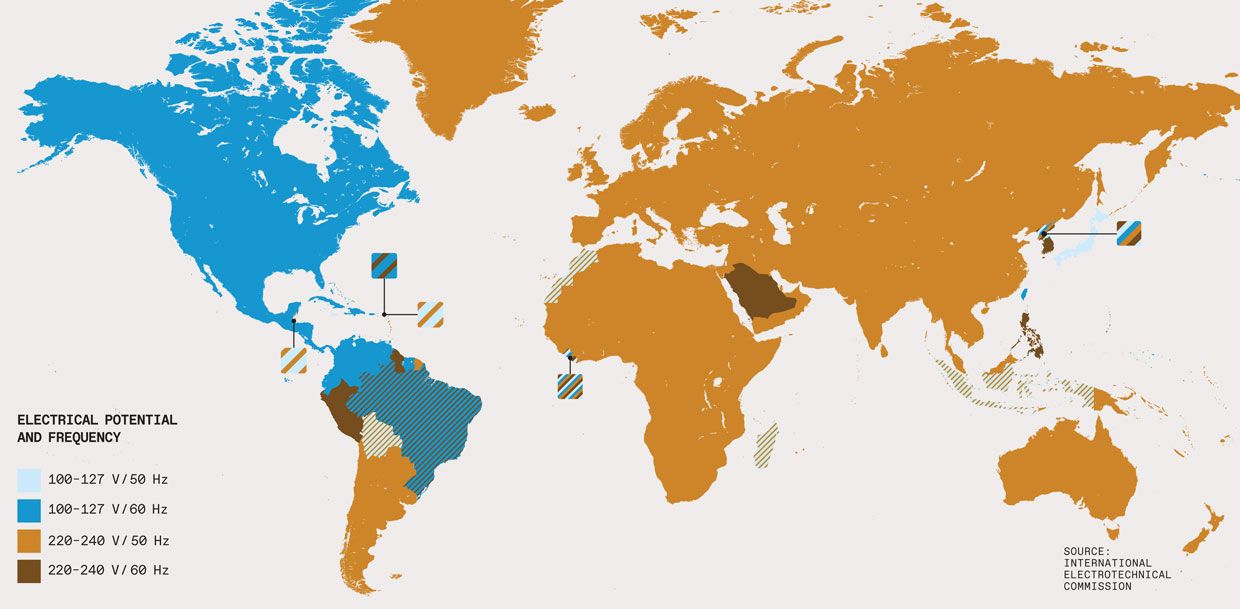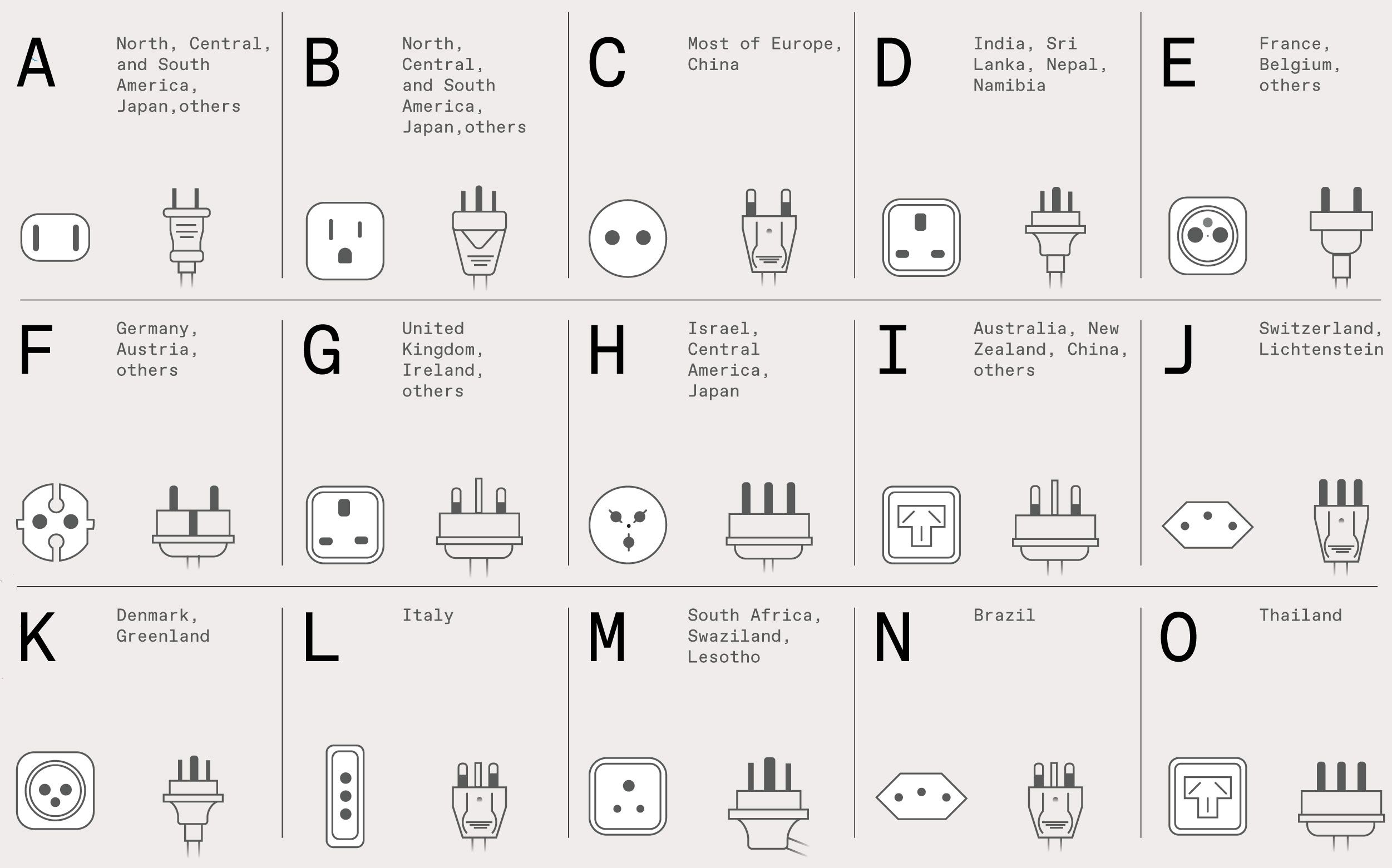Why Does the World Harbor So Many Different Voltages, Plugs, and Sockets?
 Winston Struye/StoryTK
Winston Struye/StoryTK Standardization makes life easier, but it is often impossible to introduce it to systems that have a messy evolutionary history. Electricity supply is a case in point.
Edison's pioneering 1882 Pearl Street station transmitted direct current at 110 volts, and the same voltage was used when alternating current at 60 hertz took over in American homes. Later the standard was raised a bit to 120 V , and in order to accommodate heavy-duty appliances and electric heating, North American homes can also access 240 V. In contrast, in 1899 Berliner Elektrizitats-Werke was the first European utility to switch to 220 V and this led eventually to the continent-wide norm of 230 V.
Japan has the lowest voltage (100 V) and the dubious distinction of operating on two frequencies. This, too, is a legacy from the earliest days of electrification, when Tokyo's utility bought German 50-Hz generators and Osaka, 500 kilometers to the east, imported American 60-Hz machines. Eastern Honshu and Hokkaido island operate at 50 Hz. The rest of the country, to the west, is at 60 Hz, and the capacity of four frequency-converter stations allows only a limited exchange between the two systems.
Elsewhere, the world is divided between the minority of countries with voltages centered on 120 V (110-130 V and 60 Hz) and the majority using 230 V (220-240 V and 50 Hz). North and Central America and most countries of South America combine single voltages between 110 and 130 V and the frequency of 60 Hz; exceptions include Argentina and Chile (220/50), Peru (220/60), and Bolivia (230/50). Africa, Asia (aside from Japan), Australia, and Europe work with the higher voltages: 220 V in Russia and Ethiopia; 230V in South Africa; and 240 V in Brunei, Kenya, and Kuwait.
Male and Female Created We Them Human beings are fully to blame for creating this dog's breakfast of 15 plug-and-socket standards. Winston Struye/StoryTK
Winston Struye/StoryTK The variety of plugs and sockets is even more confusing, reflecting the enduring effect of early choices and of a multitude of originally separate systems. The International Electrotechnical Commission recognizes 15 different plug and socket types, with two combinations dominant. In North and Central America, as well as in Colombia, Ecuador, and Venezuela, there are just two standard plugs, A and B: A is ungrounded with two flat parallel pins (for plug-in lights and some small appliances), B has two flat parallel pins and a round grounding pin. A and B plugs are also used in Japan but the neutral pin on many American A plugs is wider than the live pin. However, in Japan both pins have the same width, so Japanese A plugs always work in the United States but the U.S. plugs may not work in Japan.
The second dominant combination (C and F) is used in Europe and in a number of Asian countries. The C type (Europlug) has two round pins, and its use is limited to appliances requiring 2.5 amperes or less. The F plug (rated at 16 A) has two 4.8-millimeter round pins set 19 mm apart and two ground clips on the side. But the United Kingdom does not use C and F, and its G plug (also used in Ireland and some former colonies) has three rectangular blades set in a triangular pattern and an incorporated fuse (3 A for smaller appliances, 13 A for heavy-duty uses). Italy uses C and F and also the L plug, with two round pins and a grounding pin in the middle, and Switzerland has the J plug, with the same pins but in a triangular configuration.
A few countries (including Lebanon and Thailand) use five different plugs. The Maldives, an archipelago in the Indian Ocean, is one of the world's smallest countries, but it shares the record for number of plugs: six (C, D, G, J, K, L).
So, have we learned from this history to now do better at standardizing the plugs for mass-produced globally distributed electronics? Just try to plug your USB connector from an iPad into a Samsung tablet!
This article appears in the July 2021 print issue as Voltages, Frequencies, Plugs, and Sockets."